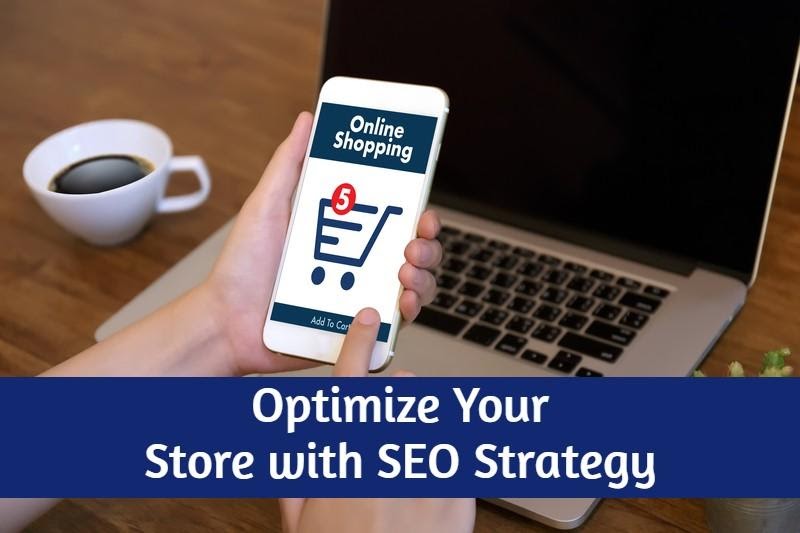
Top 6 Tips to Optimize Homepage of Your Online Store [2024]
Your homepage is some of the major real estate on your whole website. While it’s true that several of your website visitors presumably enter through landing pages or direct links to products or services, a huge amount of them still come into the homepage. And, for many, this will be the initial time they find your brand. The takeaway? The posts are high for your homepage design.
Brands have a very inadequate amount of time to convey their value to users and to influence them to take the desired action, such as browsing deeper into the site, learning more regarding a product, or signing up for a trial or demo. The homepage design can create or break the user’s experience among your website, so it’s necessary to optimize it as thoroughly as you can.
UX stands for User’s Experience. It is the most essential factor which should be considered while optimizing the home page of an online store. In an easy language, Users’ Experience is the response of the user about a distinct product, system, or service.
If you want to improve the traffic on your website, you should use a great UX.
How to Optimize Your Store with SEO Strategy?
SEO is the key to managing more customers to your online store. Fascinating say that SEO wasted as search engines have changed their algorithms to have further complex standards for relevant results. But SEO isn’t dead — it’s only changing. Selling online without an SEO plan is like an unlit shop on a secluded road. Buyers can’t simply find the store, so the dealer can never make a sale.

How Does SEO Work?
Before jumping into tactics, the basics of SEO should be understanding to perceive and appreciate the policies. SEO generates site traffic by assigning search engines to know what your online store is all about — your products and service, your business’ mission, your key customers. Search engines understand the keywords you’ve included during your store to manage your site’s content and whether your store is a relevant search result. For example, a search engine might list an online coffee mug shop great on a results page for the search “ceramic coffee mug” because the site includes those keywords in various of its product pages.
Here are the Top 6 Tips to help you achieve your Basic Need

1. Start with the user’s intent in mind
People search the web for a particular reason, which is why you require to optimize every page on your site to explain their questions, help them find something they’re looking for, and most importantly, to fit their specific purposes. Think of it this way, would you buy anything from a site that sought to force you into a purchase with ornate pop-ups and dynamic CTAs when you only wanted to research a product and teach yourself before making a purchase? Of course, you wouldn’t, plus in fact, chances are that you would never turn to the site again.
The same performs for your customers. This is why user intent is so valuable because it tells you what staging of the shopping journey the customer is in. Leverage your analytics tools to obtain out if your homepage visitors are looking for information, matching prices and options, or if they’re ready and performed to buying. Then, optimize your copy, CTAs, plus content, in general, to inspire them to stick about and eventually make a purchase.

2. Streamline your Navigation
The purpose of making sure your site has intuitive navigation should be obvious: the number one preference of the user is to find something he or she is looking for as fast as possible. The purpose of anyone who runs a website should be to satisfy that user's wish for a quick, easy browsing process, plus navigation is a significant component of that.
Website navigation can simply become needlessly complex, especially for sites with huge product inventories. Try to avoid unnecessary complexity through the use of a flat design, which puts most content inside reach in only one or two clicks.
From a visible perspective, the navigation should be easily identifiable and located in a reasonable position on the homepage. Language is also important. Cute or quirky styles for menu items might be on-brand for your company, but will users know everything you mean, or will your unique wording cause difficulty? Stick to language that is clear, short, and universal.
3. Showing Timely Products Plus Content
Always optimize your homepage such that there is no outmoded content. Let's understand it with some help of an example. You attend a website on the occasion of Diwali to get the most suitable deals and offers on the products. But the website is giving the offseason products like Holi colors, etc. Would you like to visit that website? Not. You should update the content on your website and eliminate all the outdated products. What if you do not exclude the outdated content on your website? What is the influence of this on your sales? Displaying seasoned or outdated products on your websites affect negatively on your sales. This is because the users will not love to visit your website again due to which your website will suffer organic traffic. When traffic begins decreasing, conversion rates will automatically go restrained.
4. Guide your Customers on a Journey
Talking of better results, keep in mind that users that land on your homepage is most apt not ready to buy anything. Your goal should be to encourage them to make a purchase and to do that you require to guide them on a shopping journey. Be sure to manage creative content and compelling storytelling to build a pleasant narrative, and introduce the customer to your brand, your business, and your values.
This will distance incentivize them to learn what you’re all regarding and to check out your product pages. As you might have suspected, storytelling is also one of the key distinctions between good plus bad web design in eCommerce.
5. Optimize for High SERP Ranking
Yes, you must optimize your homepage for heavenly user experience, but what good is it working to do if people can’t find your website in the first place? You have to ensure a constant ranking on the first page of Google if you are to develop brand authority, trust, and customer loyalty, which is why you hold to spend in search engine optimization, which will eventually bring more traffic to your site.
Now, while it is essential to optimize every page, your homepage should take priority because you don’t want your output pages to rank high while your homepage is nowhere to be discovered – remember that people will want to stay out your homepage first to get to know your brand.

6. SSL Certification
SSL Certification is the most significant factor that you should think while optimizing your website. An e-commerce website should have SSL certification. What is the SSL certification? SSL reaches for Secure Sockets Layer. Have you ever mentioned the address bar of the website on which you visit? Unusual websites have a green-colored lock symbol on their address bar, any websites have a grey colored lock symbol. What do these figures indicate? These lock symbols symbolize the establishment of an encrypted link among a web browser plus a web server.


